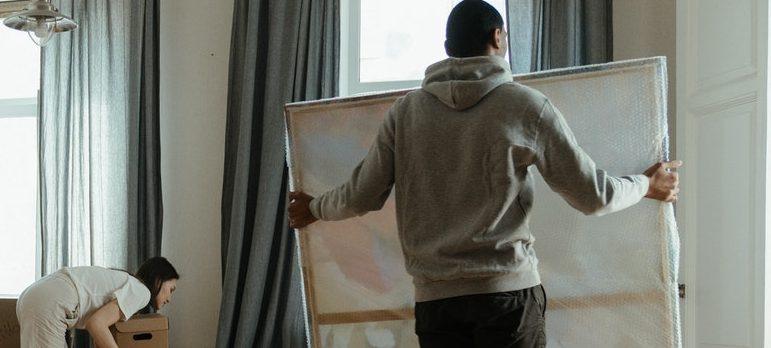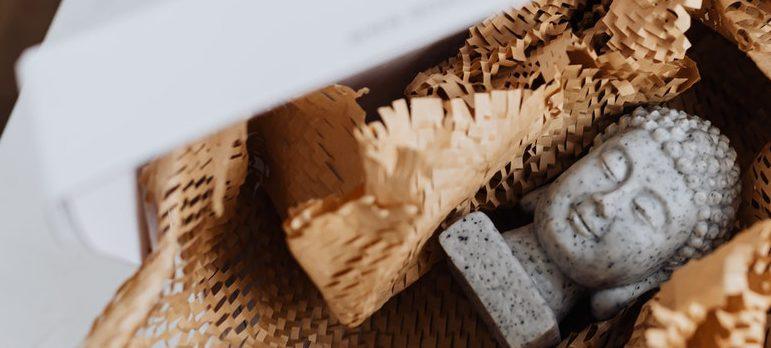Moving is always a challenging undertaking. It’s an even scarier prospect when your items are fragile. Moving artwork and sculptures across the country should be approached with special care and attention. Those are precious belongings you have carefully collected over the years. You certainly don’t want anything to happen to them. Therefore, you should look into hiring one of state to state moving companies for your relocation. Experienced movers can guarantee the safety of your belongings and their timely arrival. If packing is something you want to do yourself, keep in mind that adequately packing artwork and sculptures is vital for their safe transport. We at State to State Move have created a guide that describes all of the steps to packing and moving fine art.

Gathering high-quality packing supplies for moving artwork and sculptures
You will need the following items for packing your beloved art pieces.
Equipment / Tools
- Markers
- Scissors/Knife
Materials
- Boxes in multiple sizes and possibly wood crates
- Tape
- Glassine
- Packing paper or packing peanuts
- Plastic wrap
- Bubble wrap
- Corner protections
- Cardboard sheets
Choosing sturdy containers is the best option for moving fine art. You can buy them over the internet or at specialty stores, as well as have your movers deliver them to your doorstep. Regardless of where you get them, they are what’s going to protect your art from any kind of damage. By investing in quality supplies, you are providing your valuable items with the best protection possible. Consider every item in particular and get appropriate supplies. If this is your first time moving your art collection, don’t forget that you can always ask your movers to provide you with full packing service.
Preparing for moving artwork and sculptures

Framed paintings
- If your framed art is covered by glass in the frame, it’s important to protect the glass. Take the tape and create a big X on the glass, placing the tape over the diagonals, without touching the frame. The tape will keep the glass from shattering and potentially damaging the art during the move.
- For art with no glass in the frame, make sure to use glassine paper to cover the entire piece of art, as well as a part of the frame. Glassine paper repels air, water, and grease, so it will keep your watercolor and acrylic pieces safe.
- Wrap the entire framed piece in plastic wrap. After that, wrap it in bubble wrap and secure it with packing tape.
- If the frame is valuable or unique, you may want to buy or make cardboard corner protectors for your piece. If you need to do this step, do it after wrapping the piece in plastic wrap.
Make sure you have moving boxes to fit each painting in. There need to be at least three inches of available space all around the painting, once you place it inside. After protecting the pieces like in the steps mentioned above, insert a layer of foam inside the box, where the frame will rest. carefully place the painting in the box. Fill the sides and the top of the box with quality padding. If the paintings are extremely valuable, place only one per box. If it wouldn’t be the end of the world if they were harmed, you can fit a few in the box. Just make sure there is extra bubble wrap between the paintings. Finally, tape the boxes shut and mark them as “fragile items” and “artwork” so the movers will know to take extra care with the boxes.
Unframed paintings
For your unframed pieces, use glassine paper. Fold it into triangles and place them into each corner of the piece. After that, you are going to tape the painting (taping only around the paper corners) onto a sturdy cardboard sheet. Use additional cardboard sheets over both sides of the painting, taping them together. If you have posters you would like to move, the steps are less complicated. Simply roll it up and place it in a cardboard tube, making sure the ends are sealed. That’s it.

Sculptures
Packing sculptures for a long-distance move can be tricky because any parts that extend, as well as holes, are vulnerable. So, bubble wrap and sponges are essential for packing them. Place the sponge on all protruding parts, and wrap the piece more than once in bubble wrap. After that, tape everything into place with packing tape. Place the sculpture in the box and fill in the free space with packing peanuts or packing paper. Before sealing the box, rattle it a bit, just to see if the item inside can move. If any parts of the sculpture are moving, try to fixate it. The goal is to ensure that the sculpture can’t move at all, or at least only a little bit but not enough to be damaged. Label the box as fragile.
If the sculpture is large, the safest and sturdiest way you move it is to use a wood crate.
Hire professionals for moving artwork and sculptures
Transporting your fine art will be less stressful if you let professionals do it for you. Their experience and expertise allow them to keep your belongings secure and deliver them in a timely manner, without damages. This is especially important when it comes to long-distance moves. With interstate moving companies Florida transporting your beloved art, the entire process will be much easier. You will be able to relax and look forward to your art and your new home. Think about how great will all your pieces look in the new space.
Don’t forget about insurance
An important thing to consider when relocating valuable art is having additional insurance. You should know that standard moving insurance is based on the weight of the items being moved. So, in order to protect your fine art, you will need to look into additional insurance plans. Value-based insurance is the best option when it comes to moving artwork and sculptures.
